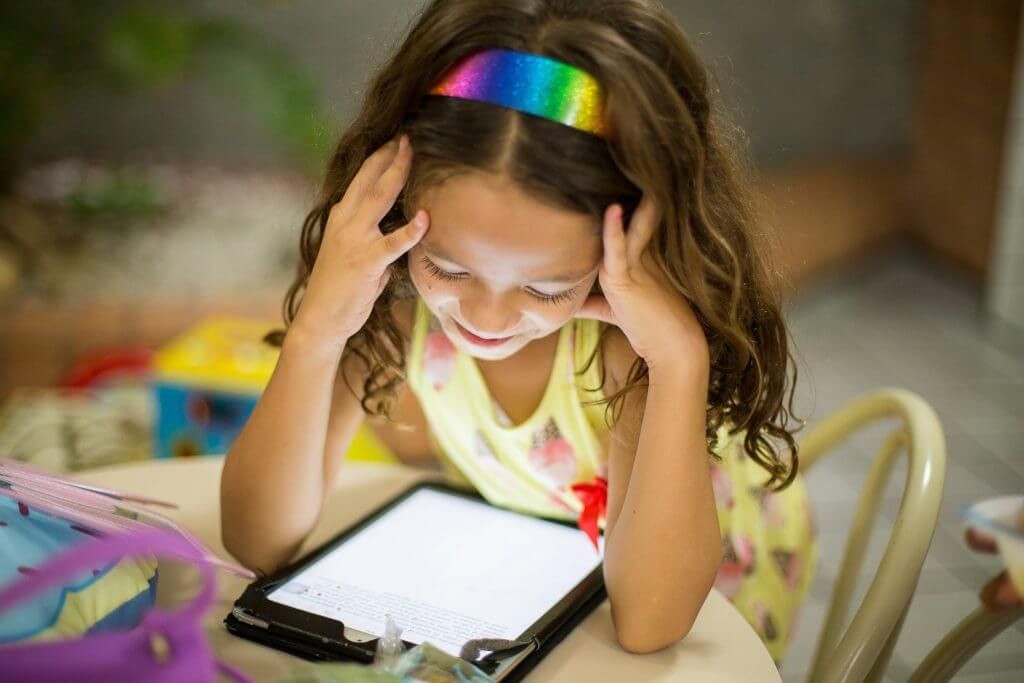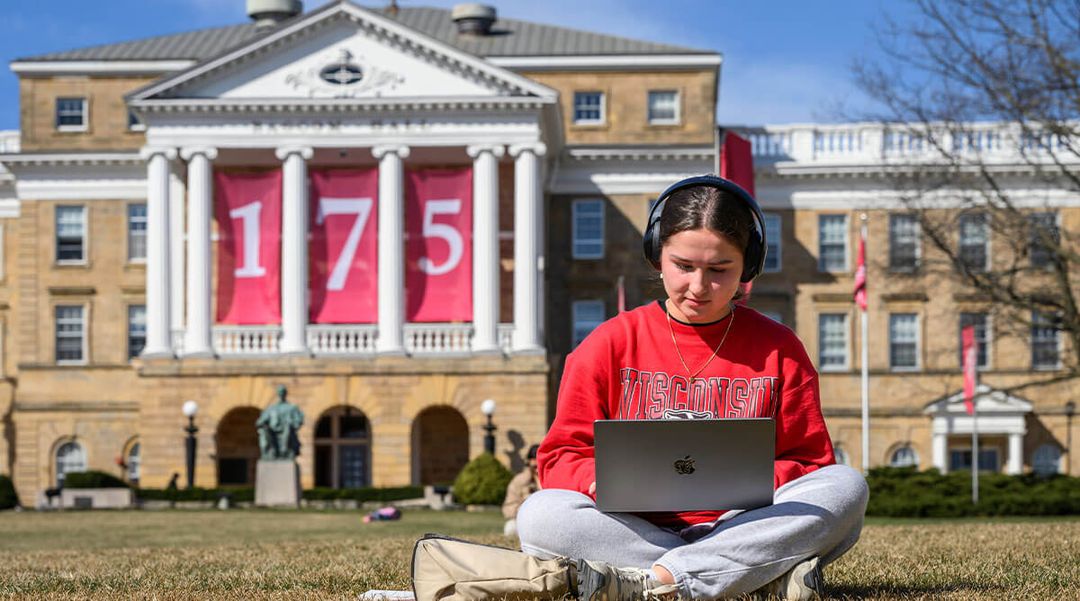We’ve never used our screens more than in the past 18 months. After an abrupt and tough transition, many of us have been logging in daily to work and learn remotely, on top of vegging out in front of the TV and our phone screens. Children are also encountering digital media at younger and younger ages, and in higher quantities than ever before. The knee-jerk reaction to screen time for infants and toddlers tends to be that it should be as limited as possible. But it’s not so simple, explains Heather Kirkorian, chair of the Department of Human Development and Family Studies in the School of Human Ecology and faculty director of the Cognitive Development and Media Lab. Her research focuses on family studies and the effects of media use on young children’s cognitive development. “If we think about all the reasons we use media … it’s not all good or all bad. It’s serving goals and sometimes it might be serving those goals well and sometimes not so well.”
Adults often have a hard time managing their own screen time effectively, but it is even more difficult for infants and toddlers to use and learn from screen media, particularly those under the age of three. Kirkorian and her students are researching ways to maximize the benefits and opportunities that screen media offer children and families, while minimizing the potential pitfalls. Her research is exciting “because it feels really important to understand. Because if we just advise parents [to] cut down on screen time, and if that’s the only coping mechanism parents have at their disposal, we might be worsening a problem rather than improving it.”
Here’s what Kirkorian has to say to parents and caregivers who want to learn more about how they can use screen media effectively to benefit their children and homelife.
- Content certainly matters.
It may seem obvious, but it’s important to keep an eye on what your kids are consuming through screen media. Generally speaking, media with an educational bent tend to have more positive results than media with violent content or media that are solely for entertainment. - Context is right up there with content.
Screen media is more beneficial to young children when there are interactive elements, as Kirkorian explains in her TEDxMadison Talk. Whether your child is video chatting with grandparents or watching TV shows with you and asking questions, the social experience will help them learn more than if left to their own devices. - Every child is different.
Keep in mind that every child has individual differences that will determine what works for them as they develop. Some children may learn quickly and easily from digital media alone, while others need more direct social interaction. - Do your research.
As Kirkorian says, “There are new things coming out all the time, most of them claim educational value when it’s never been demonstrated or tested. We call it the digital Wild West; there’s a lot out there and parents have a hard time figuring out what’s good.” She recommends a couple of sources to help parents navigate this digital Wild West: PBS KIDS (for both TV programming and web content) and Common Sense Media, which reviews and rates children’s apps and programming. - Be open and honest with your children.
This is especially important for older children as they learn to use screen media more independently and as a social and educational tool. As kids go back to school this fall, it’s difficult to know what to expect. Kirkorian stresses that “it’s going to be important for parents and kids alike to communicate a lot with each other, be open and honest about the concerns they have as well as what they’re excited about.” - Develop a good support network.
Remote learning threw kids, parents, and teachers for a loop last year. Parents and teachers had to work together to support children in their learning and keep them on task. This relationship will continue to be important as we continue to deal with the impacts of COVID-19. - Enforce consistent guidelines.
The American Academy of Pediatrics has free resources to help parents develop a household media plan that makes sense for their family. Children and Screens also provides parents with free information about a wide variety of topics relating to a healthy media diet. - Offer attractive alternatives.
If your child has used their allotted screen time for the day, offer options that rival the tablet or TV. Pro tip: saying “fun time’s over” in reference to the TV encourages the idea that there are no fun alternatives to screen time. - Reward the behavior you want.
As with anything, make sure to make a big deal out of your kids following screen time rules. This will encourage them to not throw tantrums when you ask them to take a break from the screen. - Be a good role model.
The household media plan means just that: the whole household. “Little kids, older kids, adolescents alike all use their parents as role models for healthy behavior on a wide range of things, and media use is one of them,” explains Kirkorian.










